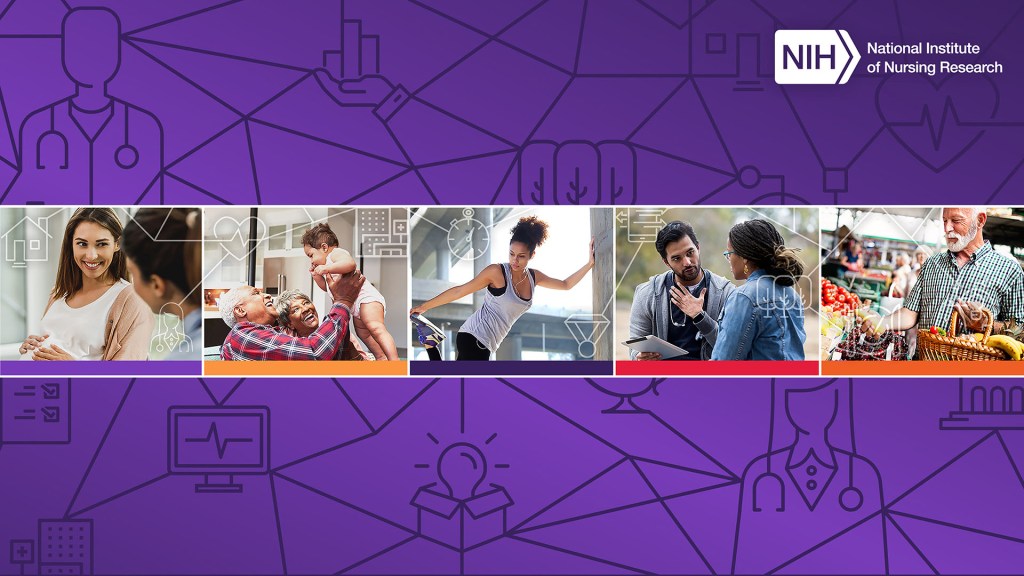Brian Castrucci
The Role of Nursing Research in Achieving Health Equity
Posted on by Shannon N. Zenk, Ph.D., M.P.H., R.N., National Institute of Nursing Research

In our 2022-2026 Strategic Plan, the National Institute of Nursing Research (NINR) lays out an ambitious new mission: lead nursing research to solve pressing health challenges and inform practice and policy, optimizing health, and advancing health equity into the future.
At NINR, we strongly believe that nurses and nursing scientists need to be at the forefront in discovering solutions for our nation’s deeply rooted systemic and structural inequities. That’s why health equity is central to our new mission and strategic plan.
The NINR’s perspective on health equity is informed by definitions from the Robert Wood Johnson Foundation (RWJF), the Centers for Disease Control and Prevention (CDC), and the World Health Organization (WHO). When considered together, these definitions provide a conceptual framework that can be applied to nursing research. We describe our perspective on health equity in the NINR strategic plan:
Health equity refers to a state in which every person has a fair and just opportunity to attain their full health potential. Inequities are rooted in systemic and structural factors, including historical and contemporary laws and policies, systems, values, and institutions, that limit access to power, opportunities, and resources for socially and economically disadvantaged groups. Structural and systemic factors, including structural racism, create obstacles to health and can lead to persistent health inequities.
The RWJF, CDC, and WHO definitions of health equity emphasize ethical and human rights principles, particularly social justice. They recognize that health disparities result from inequitable opportunities and obstacles that prevent everyone from having a fair and just opportunity to live their healthiest lives.
Ensuring that every person has a fair and just opportunity to attain their full health potential requires research that looks upstream and generates evidence-based solutions to removing obstacles to health, such as poverty, discrimination, and their consequences. That includes lack of access to good jobs with fair pay, quality education and housing, safe environments, and health care.
The magnitude of health inequities in the U.S. is both alarming and tragic. While research highlighting the stark health inequities that exist is vast, efforts aimed at eliminating them are limited.
That’s why NINR recently published funding opportunity announcements (FOAs) for research to optimize health and advance health equity. These funding announcements solicit R01 and R21 grant applications that propose independent or exploratory research projects that are consistent with the scientific framework detailed in our Strategic Plan. New applications will be accepted through February 2025, with the first deadline coming up on November 09, 2022.
Earlier this month, I had the pleasure of hosting two outstanding speakers for a webinar on health equity: Chandra Ford, professor and founding director of the Center for the Study of Racism, Social Justice and Health at the UCLA Fielding School of Public Health, Los Angeles; and Suzanne Miyamoto, chief executive officer of the American Academy of Nursing, Washington, D.C.
The event was the second of a five-part NINR Director’s Lecture series. The first lecture, which we hosted in July, focused on social determinants of health. This webinar featured Vincent Guilamo-Ramos, dean of the School of Nursing at Duke University, Durham, NC; and Brian Castrucci, president and CEO of de Beaumont Foundation, Bethesda, MD.
Each of the webinars in the series highlights a different research lens in our new strategic plan. A research lens is a perspective through which to view health challenges. The NINR’s research lenses are health equity, social determinants of health, population and community health, disease prevention and health promotion, and systems and models of care.
Our distinguished guests shared research priorities and practice and policy implications of nursing research through the lenses in our strategic plan. Providing a platform for such speakers, all of whom have dedicated their research and policy work to advancing health equity and addressing social determinants of health, helps us to achieve our mission. It does so by guiding scientists on how to apply our research lenses to their work.
I encourage you to check out NINR’s recent webinars on our YouTube channel. The speakers’ insights are valuable to nursing scientists. They also are valuable to anyone who aims to advance health equity and address social determinants of health, which require scientific approaches that are multidisciplinary and multisectoral. Indeed, our funding opportunities are open to all investigators who share an interest in our scientific framework. Please share these resources and opportunities broadly with your peers and colleagues.
Links:
National Institute of Nursing Research (NINR/NIH)
National Institute of Nursing Research, 2022–2026 Strategic Plan (NINR)
NINR Director’s Lecture—Health Equity (NINR)
What is Health Equity? (Robert Wood Johnson Foundation, Princeton, NJ)
What is Health Equity? (Centers for Disease Control and Prevention, Atlanta)
Health Equity and its Determinants (World Health Organization, Geneva, Switzerland)
Note: Dr. Lawrence Tabak, who performs the duties of the NIH Director, has asked the heads of NIH’s Institutes and Centers (ICs) to contribute occasional guest posts to the blog to highlight some of the interesting science that they support and conduct. This is the 19th in the series of NIH IC guest posts that will run until a new permanent NIH director is in place.
Share this:
- Click to share on LinkedIn (Opens in new window)
- Click to share on Pinterest (Opens in new window)
- Click to share on Tumblr (Opens in new window)
- Click to share on Reddit (Opens in new window)
- Click to share on Telegram (Opens in new window)
- Click to share on WhatsApp (Opens in new window)
- Click to print (Opens in new window)
Posted In: Generic
Tags: American Academy of Nursing, Brian Castrucci, CDC, Chandra Ford, community health, deBeaumont Foundation, funding opportunities, health equity, health inequities, health promotion, models of care, NINR, NINR strategic plan, nurses, nursing, nursing science, nursing scientists, Robert Wood Johnson Foundation, RWJF, social determinants, social inequities, social justice, Suzanne Miyamoto, Vincent Guilamo-Ramos, webinar, WHO
